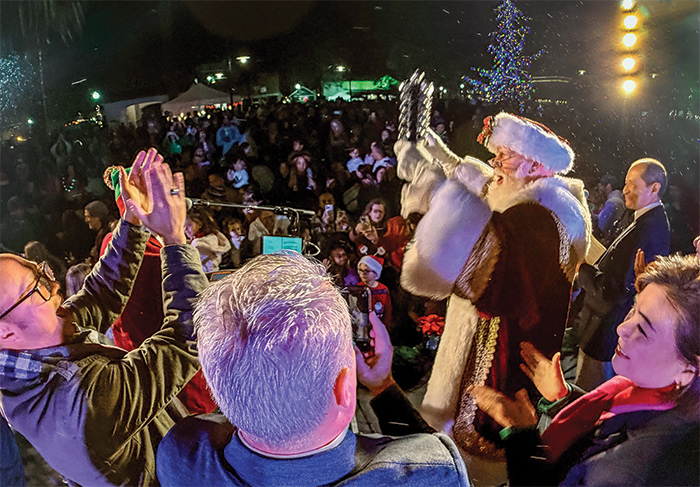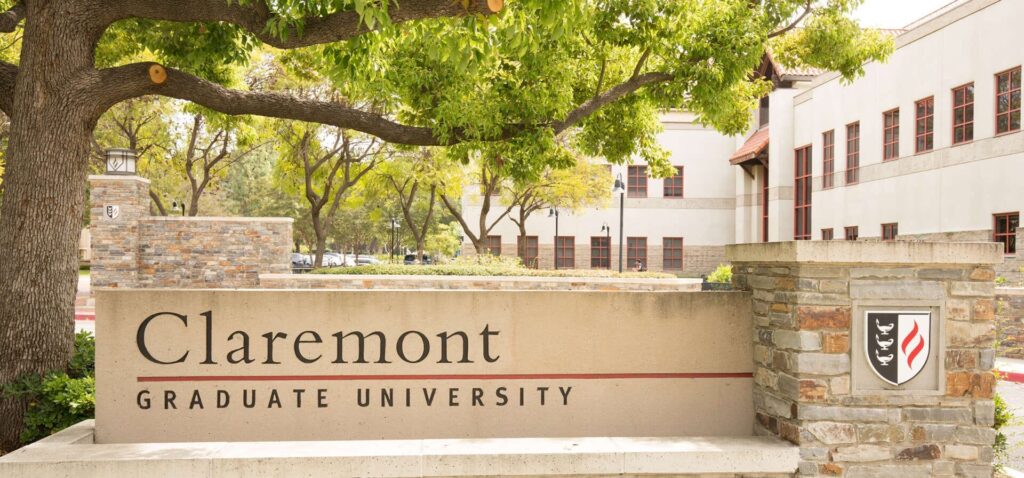In art and friendship: Harry and Rummy
Take one step into the Padua Hills studio of renowned ceramicists Harrison McIntosh and the late Rupert Deese, and the passage of time ceases to exist. Pottery wheels remain in place—just as they did when they set up shop 60 years ago—with glasses of engobe labeled by the careful hand of the artists lining the shelf above.
Even the original kiln beckons for a fire-up from the corner of the small nook. Mr. McIntosh, 98, sits in the chair next to his pottery wheel with ease, running his hand along a ceramic bowl with familiarity, though his failing eyesight prevents him from continuing to create his notable ceramic pieces.
Despite its artists’ retirement, the studio of “Rummy and Harry” will open its doors once again to guests of the ninth annual Padua Hills Art Fiesta, to be held this Sunday, November 4 from 11 a.m. to 4 p.m. at the Padua Hills Theatre. Ceramic pieces by the 2 art fiesta originals will also be on display in a special one-day exhibition.
The arts fiesta returns to Claremont for the second year in a row, reinstated last year after 52 years of closure. Mr. McIntosh, who continues to reside in Claremont with his wife Marguerite, is pleased to be returning to the fiesta, and welcomes the opportunity to give exposure to the next generation of Claremont artists.
“It serves the same purpose today as it did then: To bring the working artists of Claremont together with the community,” said daughter Catherine McIntosh, who is helping to facilitate Sunday’s fiesta and special art exhibition, sponsored by the Claremont Museum of Art.
The art fiesta first came to life in the Padua hillside in 1953, one of the first art festivals of its kind in southern California. Residents of the time described it as “one of the outstanding events of the art world,” a coming together of some of the area’s greatest artists such as Millard Sheets, Albert Stewart, Phil and Betty Dike and Betty Davenport Ford. Tourists came into town by the busload, eager to buy art pieces and gather under the shade of the Padua Hills olive trees to watch the artists at work. Mr. McIntosh remembered collaborating with cartoonist Paul Darrow, crafting plates that Mr. Darrow would draw on.
“We couldn’t make enough of them,” Mr. McIntosh recalled. “They were buying them as fast as we made them!”
The Padua fiesta was an attempt to promote the handcrafted work of local Claremont artists and push away from the increasing popularity of mass-produced artwork. For budding artists like Mr. McIntosh and Mr. Deese, it was an opportunity to further market the beauty of their handcrafted pieces.
“There weren’t very many outlets for selling artwork then,” Mr. McIntosh said, noting that there were only one or 2 major art galleries in Los Angeles at the time, not to mention that ceramics had yet to be considered fine art. “This opened up a first-class opportunity to reach out to a totally different audience.”
The duo met as army veterans turned art students in the post-WWII art boom. Both men made use of their GI Bill money by studying ceramics under ceramicist Richard Petterson at the Claremont Colleges. Equipped with an old kiln and their newfound knowledge, the friends set to work in a shared Foothill Boulevard studio. They moved to the Padua Hills art studio in 1958, joining an enclave of artists living and creating art amongst the beauty of the hillside, a source of inspiration the artists enjoyed.
Despite contrasting styles—Mr. McIntosh focused on abstract and Mr. Deese on functionality—the ceramicists were a perfect pair when it came to their work habits. Mr. McIntosh and Mr. Deese ran a tight ship, with not an object out of place despite the limitations of their small workspace, family members noted.
“The 2 of them just fit together like a hand in a glove in term of working habits,” said Mary Ann Brow, Mr. Deese’s daughter. The wheels were never put to bed with mud on them and they kept a meticulous schedule. They had everything down like clockwork.”
While their workspace and kiln were small, the artists’ systematic, ordered approach aided their productivity. Thousands of works of art produced in their Via Padova studio are a testament to the functionality of their partnership. Mr. Deese’s daughter was struck by their level of productivity recently while browsing through a photo archive of her father’s works.
“Seeing the amount of input through that one little kiln and 2 wheels is just astounding,” Ms. Brow shared of the experience.
Despite the amount of time put into all of those pieces, their relationship remained strong, according to Mr. McIntosh’s wife, Marguerite.
“Those 2 guys never had a cross word between them,” Ms. McIntosh shared. “They were perfect gentleman but more than that, hey really cared for each other.”
The relationship fostered between Rummy and Harry lives on, immortalized through their clay works of art, found in exhibits and installations throughout the world, and through the role they played in setting the foundation for the Claremont art scene.
Mr. McIntosh and family members of both artists welcome guests to take a tour of the “Rummy and Harry” studio, located at 4206 Via Padova. The studio will be open through the running time of the fiesta, scheduled from 11 a.m. to 4 p.m. Ceramic art pieces will also be on exhibit within the Padua Hills Theatre dining room. For more information, call 626-1386.
—Beth Hartnett
news@claremont-courier.com










0 Comments